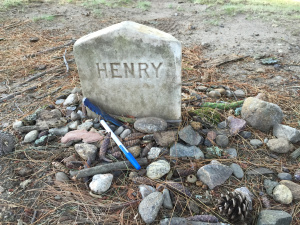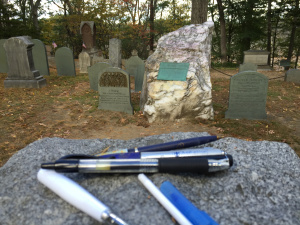Pedestals and Ponds
I grew up in the 1950’s in a pretty house in a pretty town where we learned not to speak about heartache. As I became an adult, a revelation was how much had been hidden in other houses, too. I became a writer not to shame my family or the neighbors or blow up facades. I carried with me beauty along with hurt, and wanted to find ways to put them side by side. I looked for models in books I’d loved. I remembered the generosity and moral striving in Little Women, but when I learned about the real issues of the woman who wrote that novel and the family she based her fictional world upon, I cared about them even more. I felt sad that Louisa May Alcott thought she couldn’t tell the whole truth, or at least the sort of truth we find in novels. I wrote my book for young readers, , to tell more about the hard year when Louisa was twelve that might have turned her into a writer. Trouble is often inspiration. I wrote Little Woman in Blue to address some of the rivalry as well as love between the Alcott sisters.
We live in a more open era than the one I grew up in. Icons get pulled down and broken. Stuffing gets strewn, as much of it should. But sometimes I wish people would take more breaths and second looks. I just read a recent New Yorker article called “Pond Scum,” taking down Henry David Thoreau. Yeah, he wasn’t perfect. But did I ever think so? Even when I read (okay, let’s put “read” in quotes) Walden in high school, I had my doubts about him. My teacher might have told us that he brought his laundry to his mother. I might not want to have lunch with him, but he wrote good lines about bluebirds and woodchucks, and I’m happy that he was who he was. I’ve always preferred Ralph Waldo Emerson’s rolling sentences and admire his generosity to the Alcotts; but as a husband? First off, he asked his wife to change her name from Lydia to Lydian as more poetic, which it might be, but…. Let’s face it. Having heroes is a dangerous business.
Can we get rid of both pedestals and knocking them down? We don’t need to let all walls tumble to suggest everything that happens inside houses with freshly painted shutters and swept steps. Can we understand that no one is all they appear to be, and be ready to learn more? Can we enjoy a memoir that isn’t built around smashed vases and broken goblets and novels in which small revelations come with tea and scones?
We can visit graves understanding that these were humans, both imperfect and wise. Here’s Thoreau’s small stone at Sleepy Hollow in Concord and Emerson’s quartz memorial, with gifts of pens. These men made other people want to look around and inside, think and write, and maybe that’s enough.








